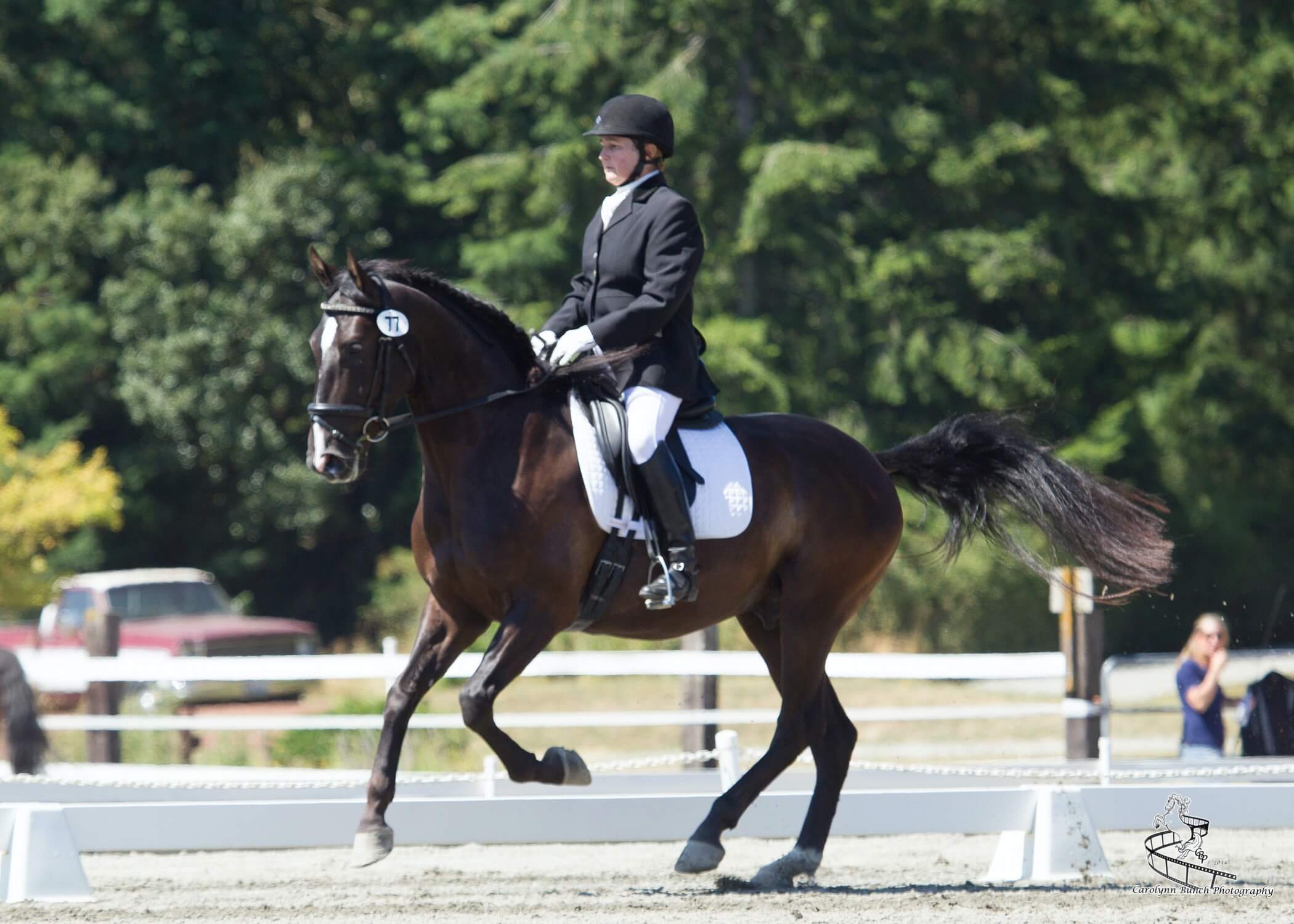Few things are more important for horse health than good hay. We’re fortunate that the Pacific Northwest produces some of the best hay in the world. With hay prices escalating and worldwide demand high, it’s worth knowing some basics on how to select hay before you trot down to the local feed story to make a purchase.
Buying hay has become, unfortunately, a case of buyer beware. If you purchase your hay from a farm store, you’d best be armed with the knowledge of what constitutes “good” horse hay and know exactly what your horse needs. Store employees in such establishments don’t often have the experience to help you. Also, many hay dealers are not as educated about what they’re selling as they should be. Here’s a primer on the basics of grass types, cuttings, and what makes good horse hay.
Grass, Legume, and Cereal
Horse hay comes in three main categories, legume (usually alfalfa), grass hay (many varieties), or cereal-grain hay such as wheat or oat grass.
Alfalfa hay makes good horse hay but can be very rich and highly caloric. It’s more often fed as a supplemental forage than an exclusive one.
Commonly fed grass hays in the Northwest are timothy, orchard grass, teff, fescue, rye or a mix of native grasses. Grass types are easily identified by their seed head. Timothy is a popular hay as it agrees with many equines and is very palatable. Timothy’s protein and sugar/starch levels often fall in the “just right” category. Orchard grass can also be good and feeds much like Timothy. Teff is known for its low sugar and starch levels but is difficult to find, needs to be carefully farmed, and can easily become unpalatable if cut too late.
The only way to really know what protein, sugar/starch, and fiber levels are in your hay is to have it tested.
What Hay is Best?
There’s no easy answer here, as it really depends on your individual horse’s needs. I usually keep three different kinds of hay in my barn. What’s most important is the quality of the hay.
What Makes Quality Hay?
Horse hay should be free of mold, dust, rocks, and noxious weeds. You can’t always tell by looking at the outside of a bale, so purchase one bale and “test” it on your horses if possible.
Horse hay should be green and have a good leaf-to-stem ratio. Horses prefer to eat the leafy part of the grass, but if you buy hay that was cut so short that there’s no stem, expect your horses to slurp that up and then stand around wanting something to eat. Super short cut hay also tends to have a high protein content which many horses can’t handle causing digestive upset. As long as your horse has no underlying health problems such as bad teeth or hindgut ulcers, feeding hay with some stem will give them more fiber and some chewing time.
Which Cutting?
Second cutting is the favored cutting both in alfalfa and grass hays, but early cut first cutting can be really nice. The problem with first cutting is when it’s cut late, it’s too coarse for palatability and has lost much of its nutritional value. Third cutting tends to be very short (leafy) and too rich for many horses.
Good Grass Hay Begins with Good Farming Practices
It takes experience, lots of water (not always available) and good soil (also hard to come by) to make good hay. Farmers need to know if their fields have noxious weeds, rocky patches, or mole hills that are being baled up, and when and how much fertilizer, pesticide, and herbicide to use. All these variables affect the end product.
Native Grasses
Harder and harder to come by, native grass can be really good hay. Usually you only get one cutting of this, and its protein levels are often low. Due to their popularity and rarity, good quality native grasses are often snatched up and sold locally.
Cereal Grasses
Oat and wheat hay can make good hay for some horses. Highly fibrous, they often mix well with alfalfa. But, beware of high sugar and starch levels and low protein. They can be very high in phosphorus too, which is why mixing with calcium-rich alfalfa can be a good idea.
What is “Local” Hay?
Sometimes when asked what kind of hay someone is feeding, they answer “local”. Local hay is not a kind of grass, but hay that is grown locally. It can be any kind of grass.
If you’re not sure about the hay you’re buying (or what you should buy), ask an experienced friend, veterinarian, or trainer to take a look at it before purchasing. Consider having it tested. It’s the most important wellness purchase you’ll make for your horse each year.
See this article in the October 2021 online edition:

Kim Roe grew up riding on the family ranch and competed in Western rail classes, trail horse, reining, working cow, and hunter/jumper. She trained her first horse for money at 12 years old, starting a pony for a neighbor.
Kim has been a professional dressage instructor in Washington state for over 30 years, training hundreds of horses and students through the levels. In recent years Kim has become involved in Working Equitation and is a small ‘r’ Working Equitation judge with WE United.
Kim is the editor of the Northwest Horse Source Magazine, and also a writer, photographer, and poet. She owns and manages Blue Gate Farm in Deming, Washington where she continues to be passionate about helping horses and riders in many disciplines.





